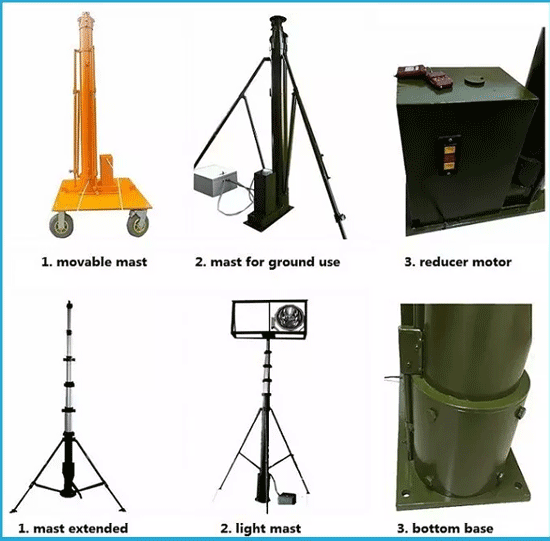Portable Communication Mobile Base Station
June 17,2022
Compared with similar products, the portable mobile lifting pole device has the characteristics of fast lifting speed, strong wind resistance, strong corrosion resistance, high reliability, strong durability, safety and stability, lightweight, small closing height, and easy portability.

There are two types of lifting methods: manual and electric. The portable mobile lifting rod device can raise the height of 20 meters, the closing height is about 2.7 meters, and the weight of the main pole is 15Kg-60Kg. It is widely used in emergency lightning protection for the army, fire protection, construction, field construction, large-scale cultural and sports activities, disaster relief, and other emergencies.
The use of lifting lightning rods can also make the installation and maintenance of aviation obstruction lights safe and convenient. When in use, install the lifting mast on the top or the periphery of the equipment, and vertically lift the lightning rod, camera equipment, antenna equipment, etc.
Use technical notes
1) Knowledge about the wind resistance performance of the mast
The wind resistance performance of the mast is one of the important technical indicators of mast products. Every customer wants to know how much wind force their mast can withstand after the load is installed, but at present, almost no one can answer this question accurately, because the wind resistance performance of the mast is determined by the following three factors:
A. The material and structure of the mast
B. The height of the mast
C. Weight, volume, and shape of the load

Under the circumstance that the above three conditions are clear, to obtain the specific wind resistance index of the pneumatic lifting rod, pneumatic lifting device, pneumatic telescopic mast, pneumatic lifting tower mast, and pneumatic lifting bracket, the following three methods can be used:
1) Theoretical calculation is to use methods such as finite element analysis.
2) The simulation experiment converts different levels of wind into wind pressure and then uses physical methods (tensile force meter) to test.
3) Wind tunnel experiment The mast and the load are placed in the wind tunnel to simulate the wind speed for testing.